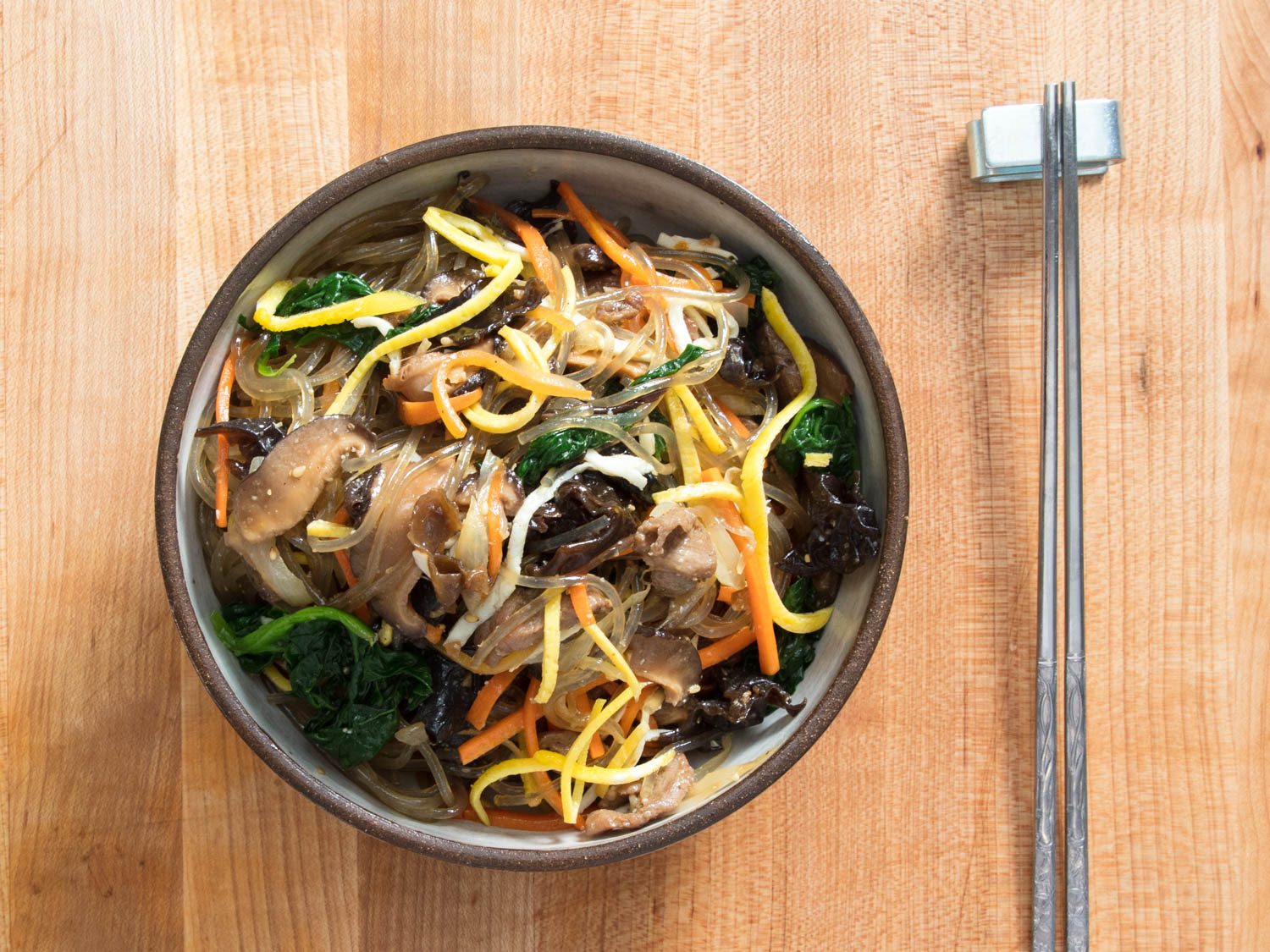
[Photographs: Vicky Wasik]
(As told to Sonja Swanson.)
Japchae is a classic Korean dish—one of those foods you’ll find in every Korean-essentials cookbook. Many people know it from the Korean restaurants they visit, but often the japchae they’re served comes with an abundance of glass noodles drenched in sesame oil, soy sauce, and sugar, the steam rising off it a clear sign that it’s straight off the fire.
The japchae that I remember growing up with, though, was usually warm or room-temperature, and it had a lot less noodles and a lot more delicately seasoned sautéed vegetables and meat. After all, the name japchae describes a mix of finely cut ingredients. It takes a little more effort and investment of time, but putting together a japchae with a generous variety of ingredients is worth it. The result is more refined and more subdued, and, I think, a lot more delicious than those heavy-handed restaurant versions.
Each ingredient that goes into japchae is deeply considered. Perhaps most apparent is the dish’s wide range of flavors and textures—springy sweet potato noodles, savory meat, meaty mushrooms, tender vegetables, and even more tender egg.
Less obvious to those unfamiliar with Korean cuisine is the importance of color in determining what goes into japchae. Obangsaek is the word to know, and it describes the set of five traditional colors in Korean culture, which correspond to the five elements: red (fire), blue (wood), yellow (earth), white (metal), and black (water).
Obangsaek is an important concept in Korean aesthetics in general, and it also applies to the Korean table. Thus, your japchae will look best with a balance of black/brown, red, blue/green, white, and yellow ingredients. That works out to ingredients like meat and mushrooms (for black and brown), carrot or red bell pepper (for red), spinach or another green vegetable (for blue/green), slivered cooked egg whites (for white), and slivered cooked egg yolks (for yellow).
Exactly what you use will depend on your tastes and the seasons. You can use hamcho (samphire) in place of the spinach in the summer, or even hold the noodles and replace them with soy sauce–braised burdock root in the fall.
There’s a lot to prep for japchae—there’s no avoiding that, given the many components and the different preparations for them—but the good news is that it can all be done well in advance of serving. The japchae can then be refrigerated for a day or two and reheated in a skillet before serving.
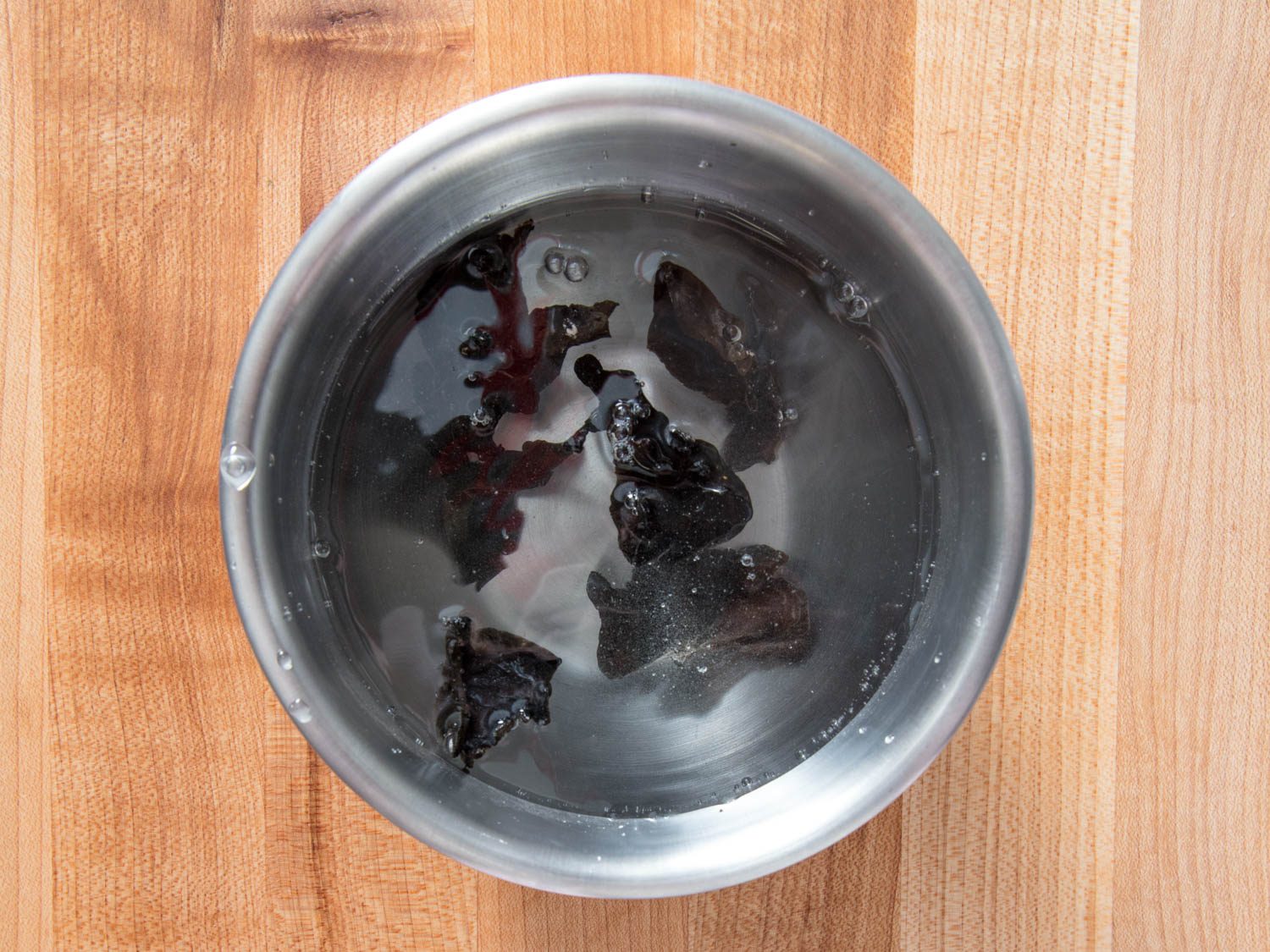
The first step is soaking dried mogi (wood ear) mushrooms in room-temperature water for about an hour, until they’ve softened and swelled. Trust me—these expand a lot. The tiny quantity of dried wood ear mushrooms called for in my recipe may seem like a mistake, but it’s not; it’ll yield plenty.
After the wood ear mushrooms have soaked, you can tear them into smaller pieces, then mix them with sliced pyogo (shiitake) caps and thin strips of raw pork shoulder.
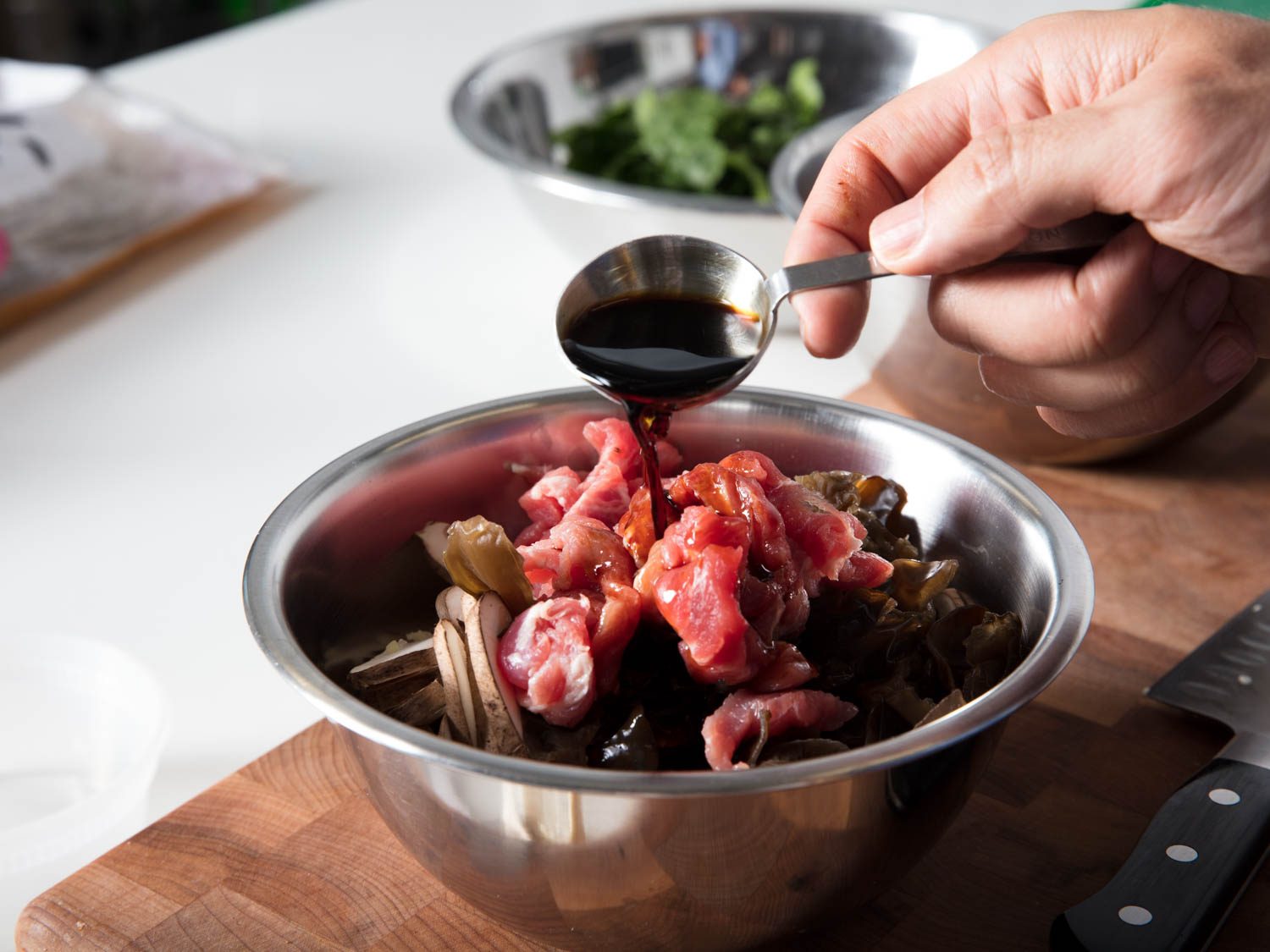
The mushrooms and meat are marinated with soy sauce, sugar, garlic, ginger, soju, and some sesame oil. I recommend using a wheat-based soy sauce (yangjo ganjang) for this recipe, which has a sweeter flavor than purely soy-based Joseon ganjang; that sweeter flavor works well in meat marinades. (To learn more about the major types of Korean soy sauce, including product recommendations, see our article on the essential Korean pantry.)
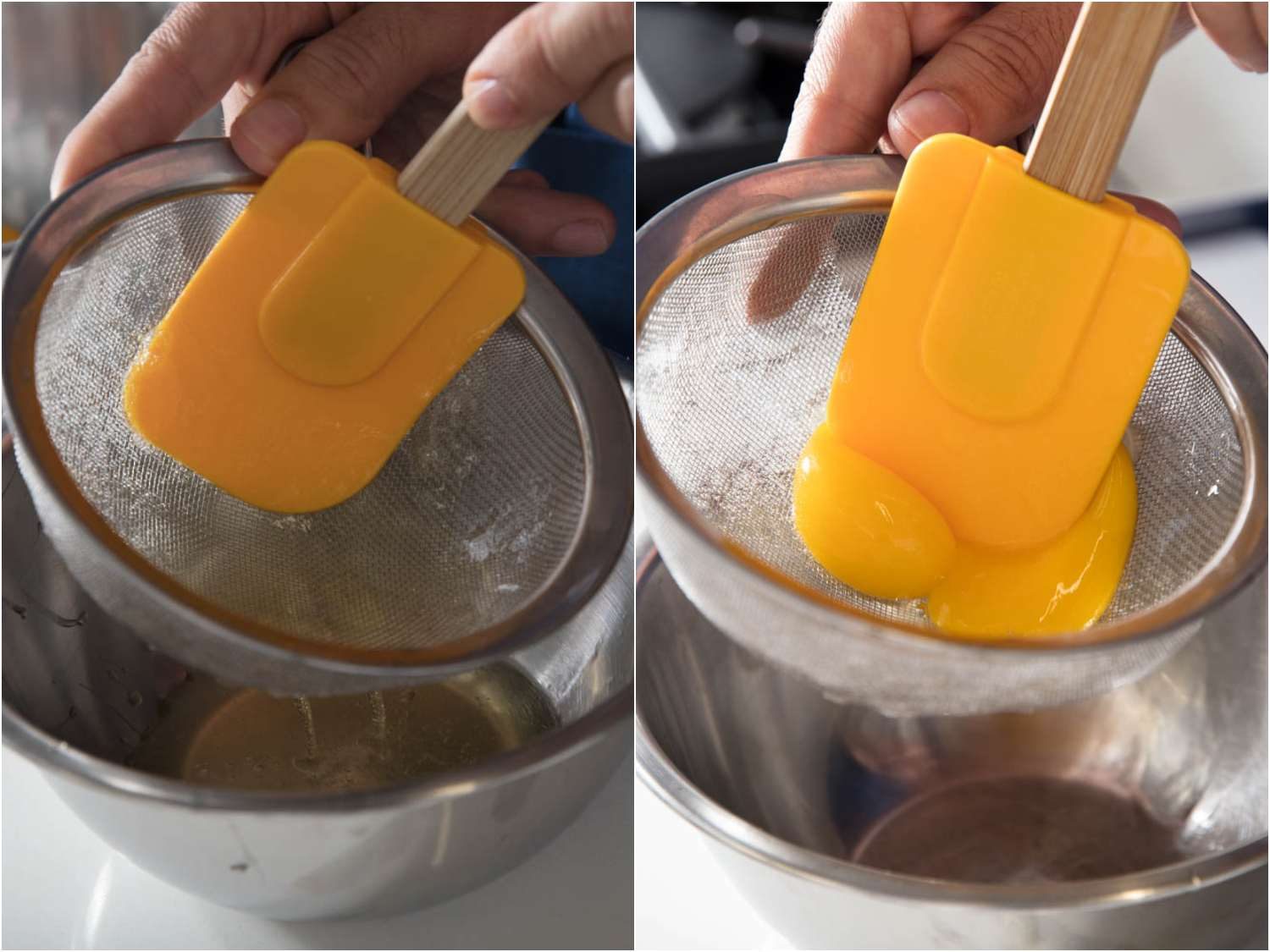
While the meat and mushrooms marinate, you’ll want to make your jidan, an egg garnish in Korean cooking that requires a special technique. To make jidan, egg yolks and whites are separated, strained to remove the chalazae and any other unsightly bits, and carefully beaten to avoid introducing air bubbles. Each is then gently cooked in a lightly oiled nonstick pan to form a perfectly round disk, one yellow and one white, with no browning or coloring on them.
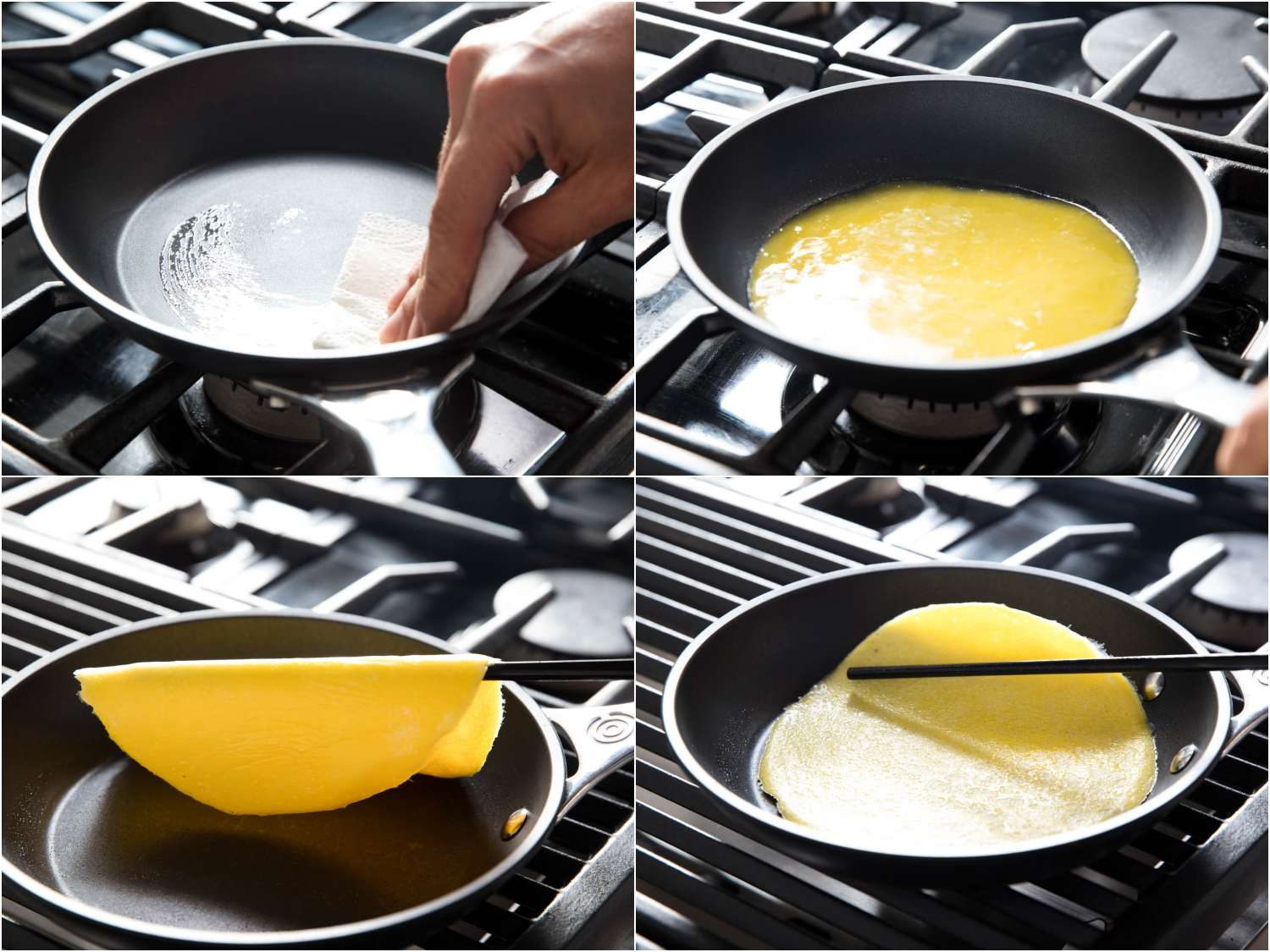
The key is to keep the colors bright, so you really have to hover over the pan, watching it like a hawk. When each disk is mostly set, it’s time to flip it, which I like to do by very carefully sliding a chopstick underneath, lifting, and then laying the egg back down on the other side to cook it completely through.
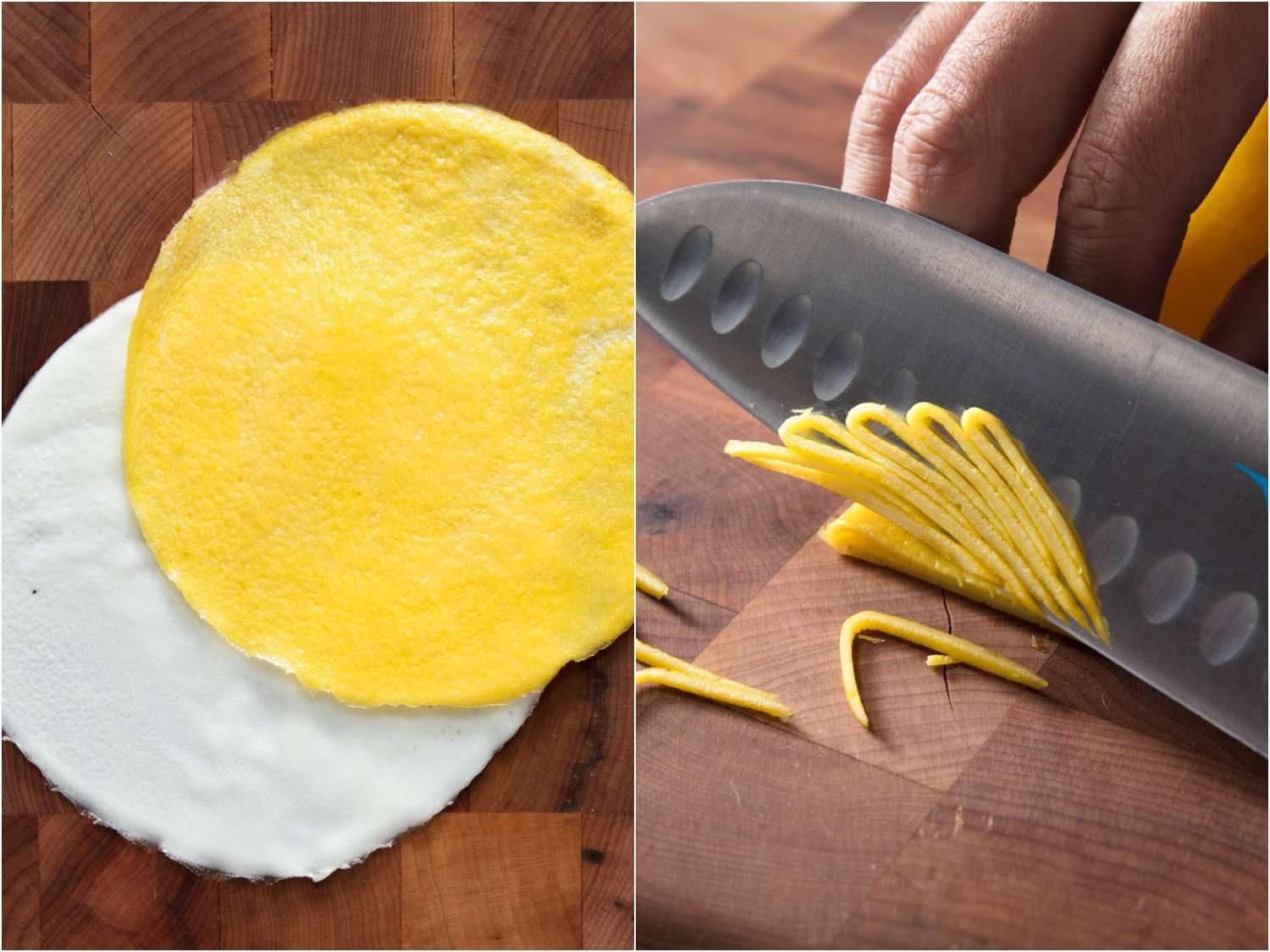
Once it’s cooled down, you can slice each round into very thin slivers. If you’re wondering why the yolks and whites are cooked separately, just remember obangsaek—we want the bright-yellow yolks and snowy whites to shine through. Mixing them would produce the weaker yellow color we’re all used to seeing in scrambled eggs and omelettes, one that’s neither strongly yellow nor white.
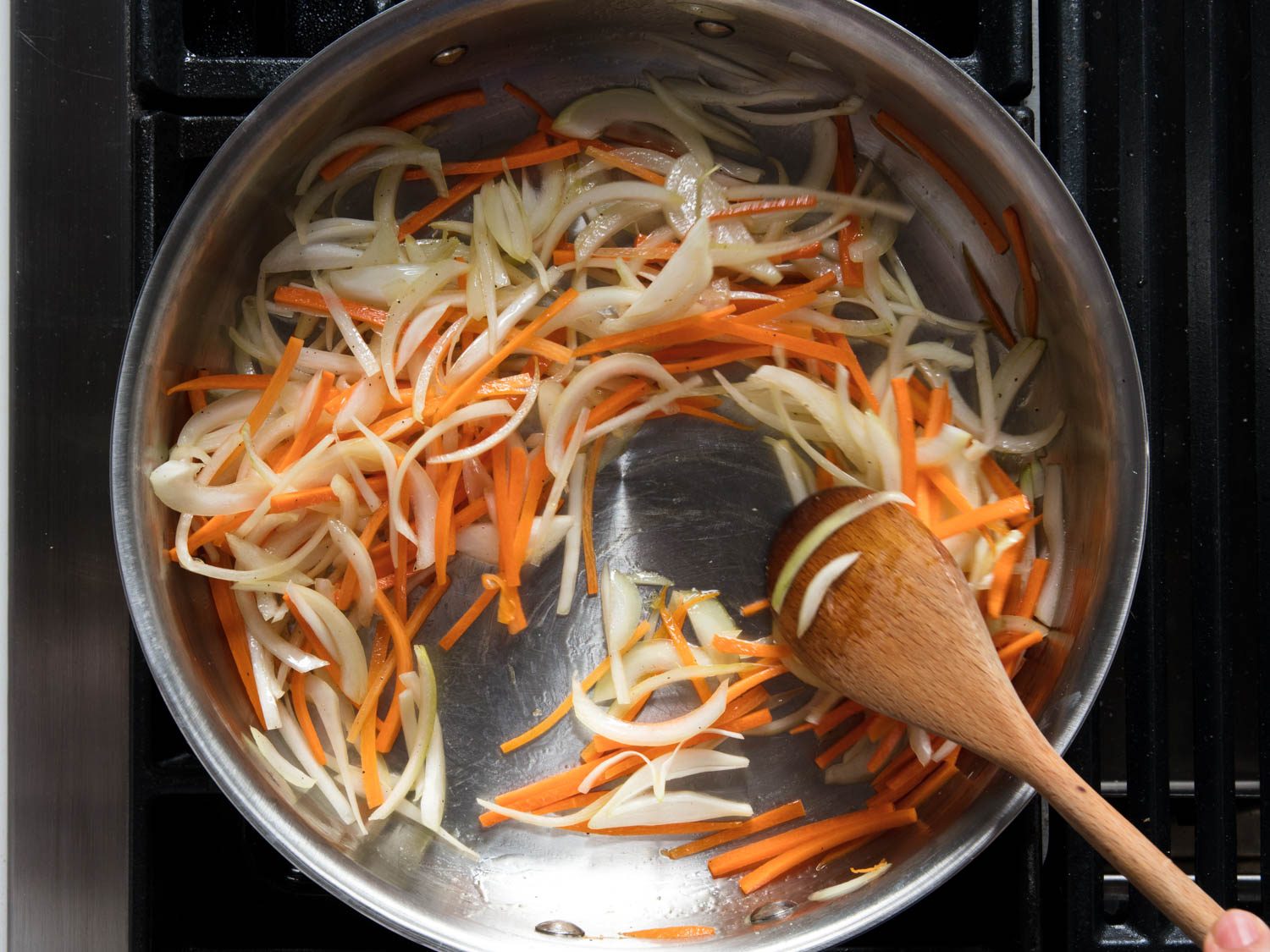
After the jidan is done, you can prepare the carrots and onions, which are julienned and then cooked in a small amount of oil until slightly softened. Just make sure you don’t cook them so much that they’re completely soft and mushy.
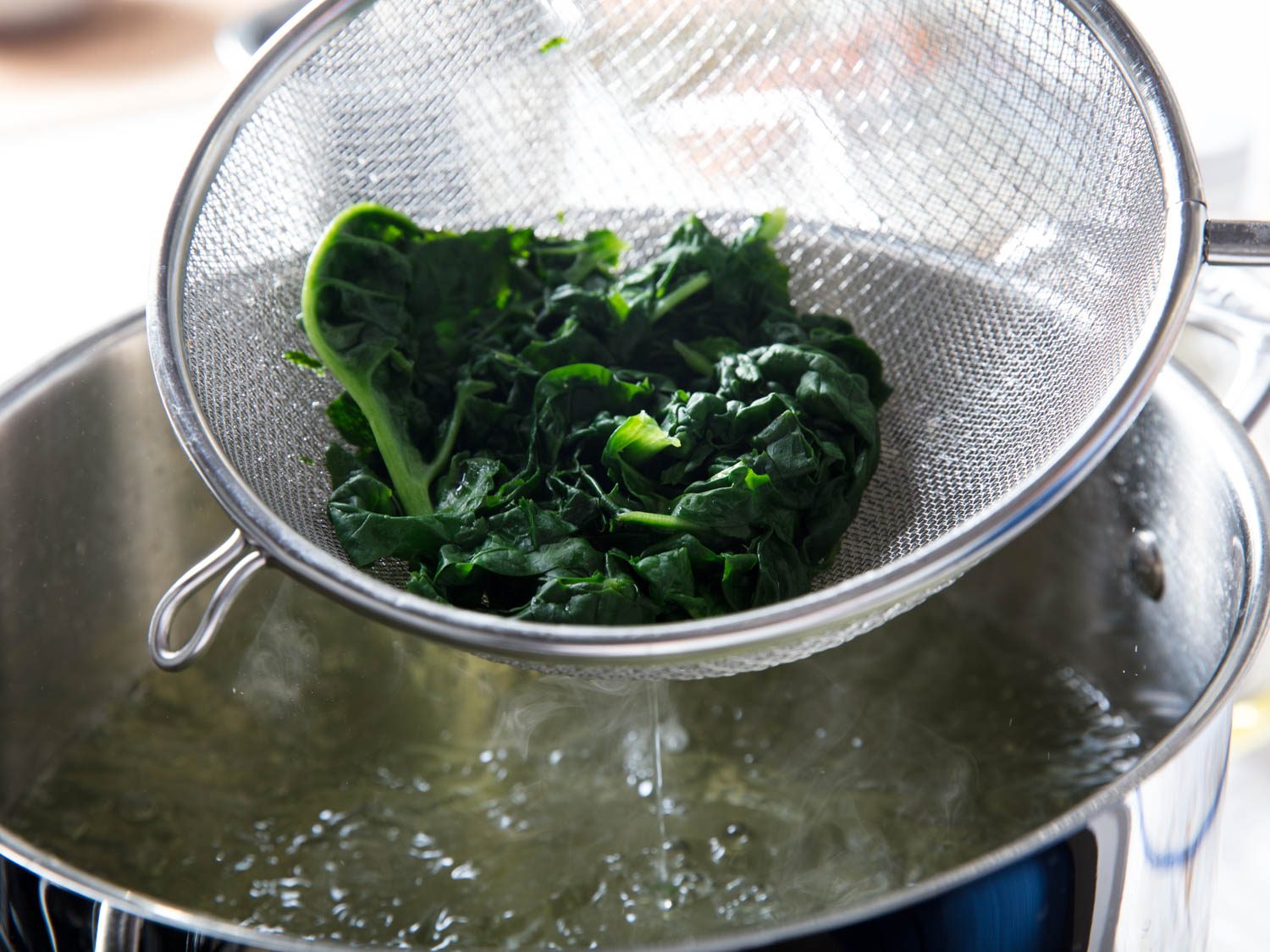
You’ll also need to blanch your spinach, drain it, then squeeze it dry of excess water. The spinach can then be seasoned with some minced garlic and sesame oil, and left to marinate.
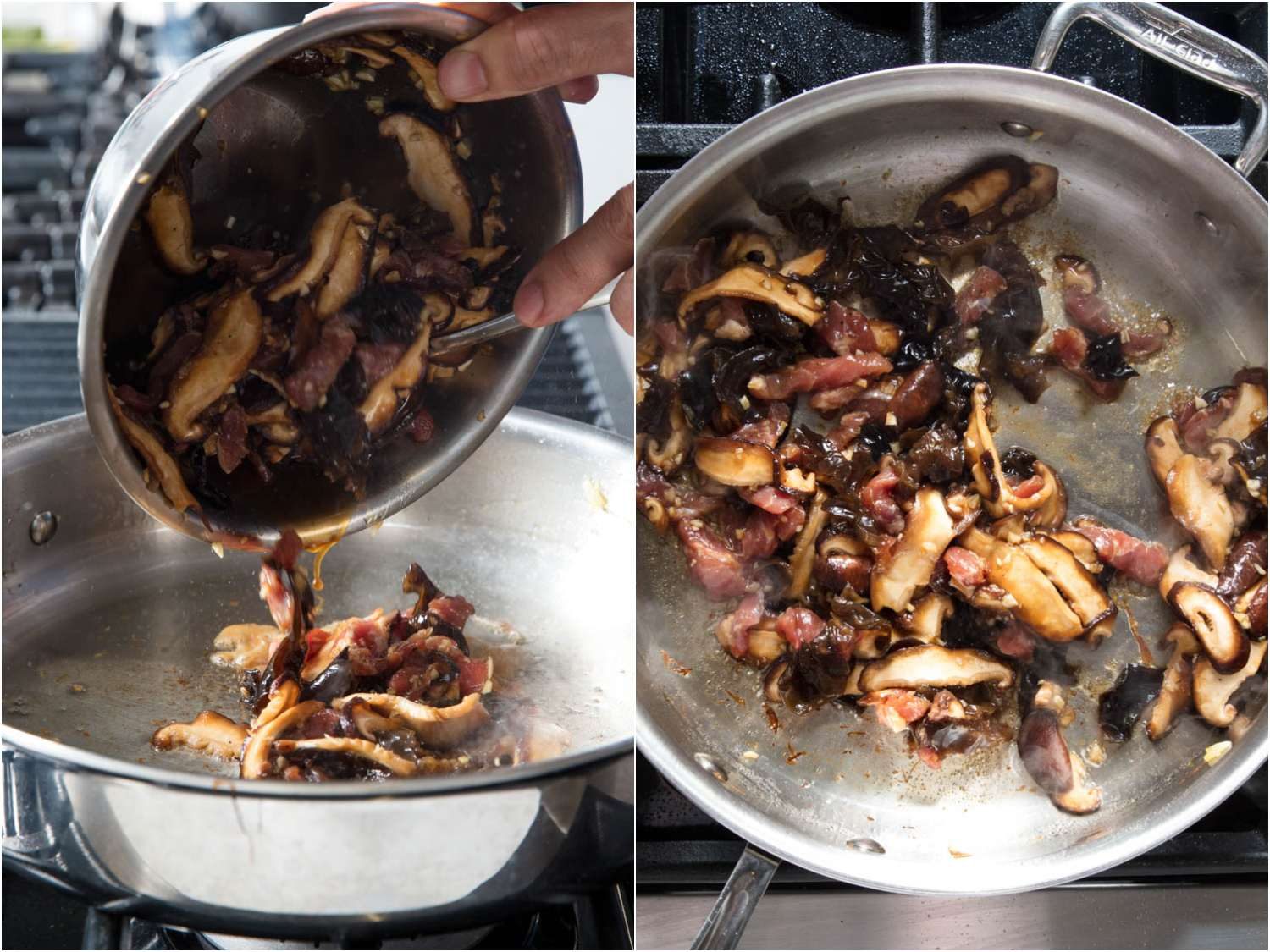
Next, the marinated pork and mushrooms need to be cooked until they’re tender and just starting to lightly brown.
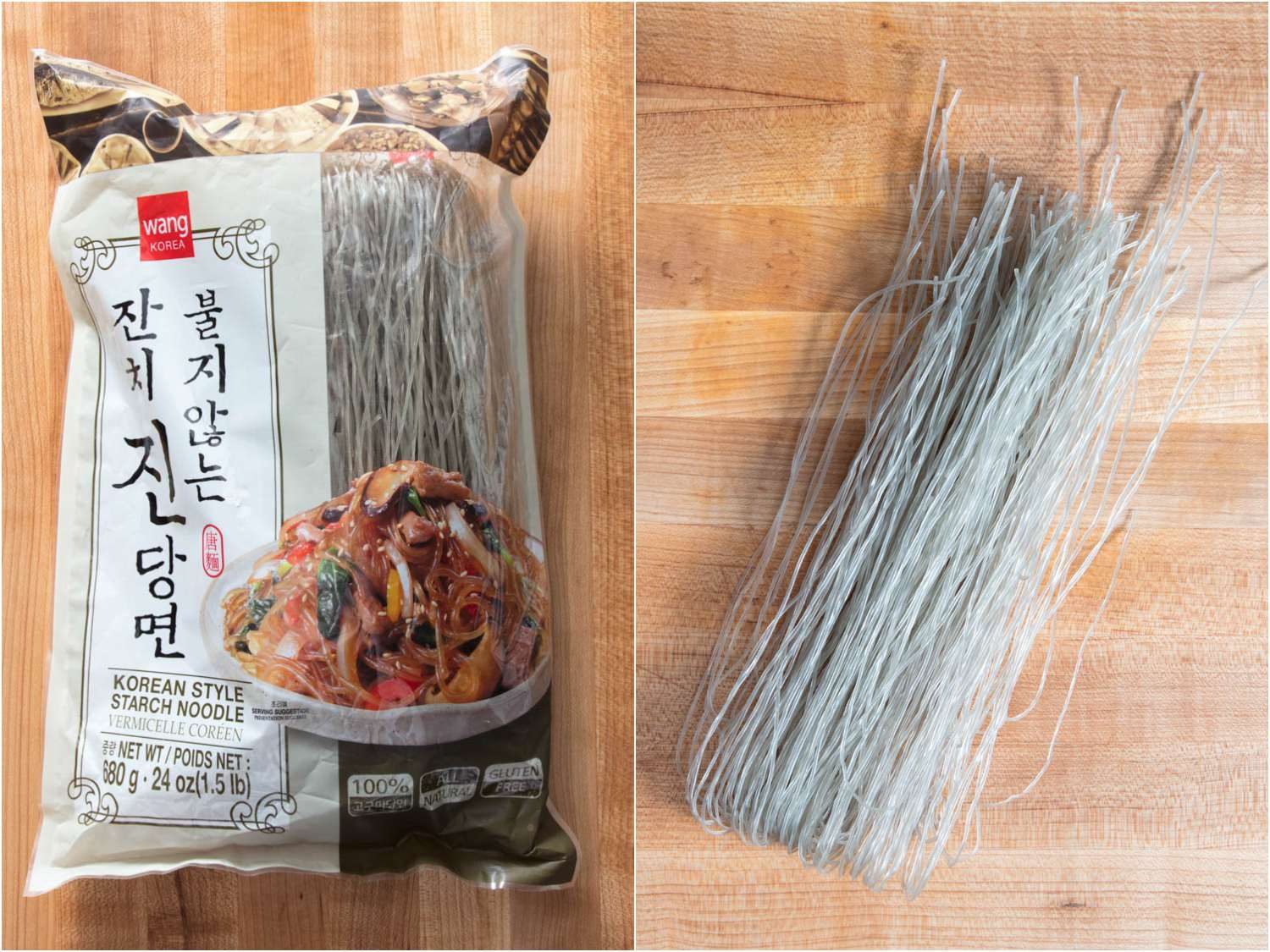
For the noodles, you want dangmyeon (Korean sweet potato glass noodles). Note that they are sometimes sold as rolls of uncut, extra-long strands. If these are the ones you have, just use a pair of kitchen scissors to make a couple of crosscuts in the pile of cooked noodles to shorten them (they’re way easier to cut when cooked). Just be careful not to cut them too short, or your japchae will end up looking like a broken-noodle salad.
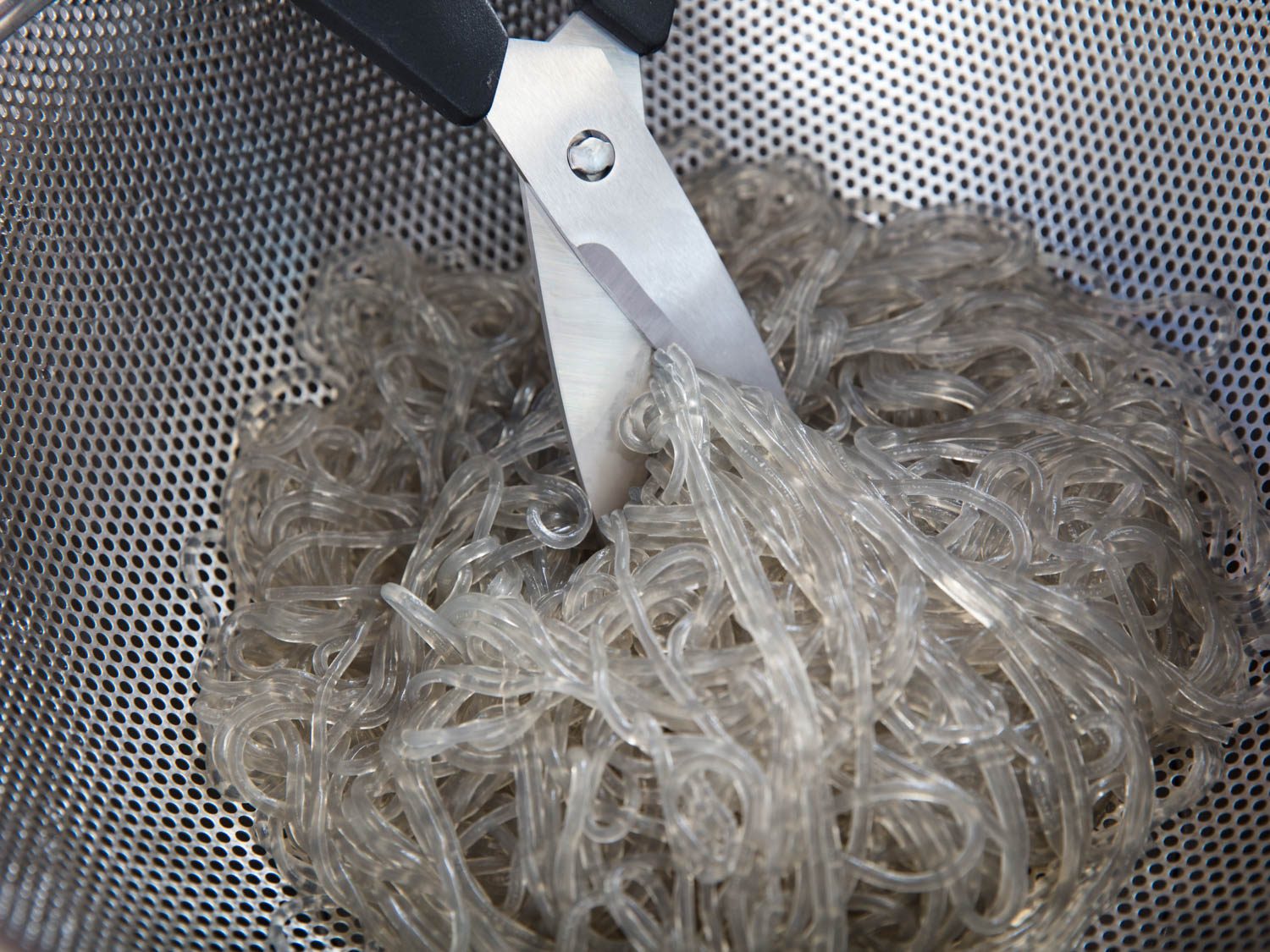
Cooking the noodles is as simple as boiling them until they’re softened but chewy, then rinsing them under cold water before that pleasant chewiness fades.
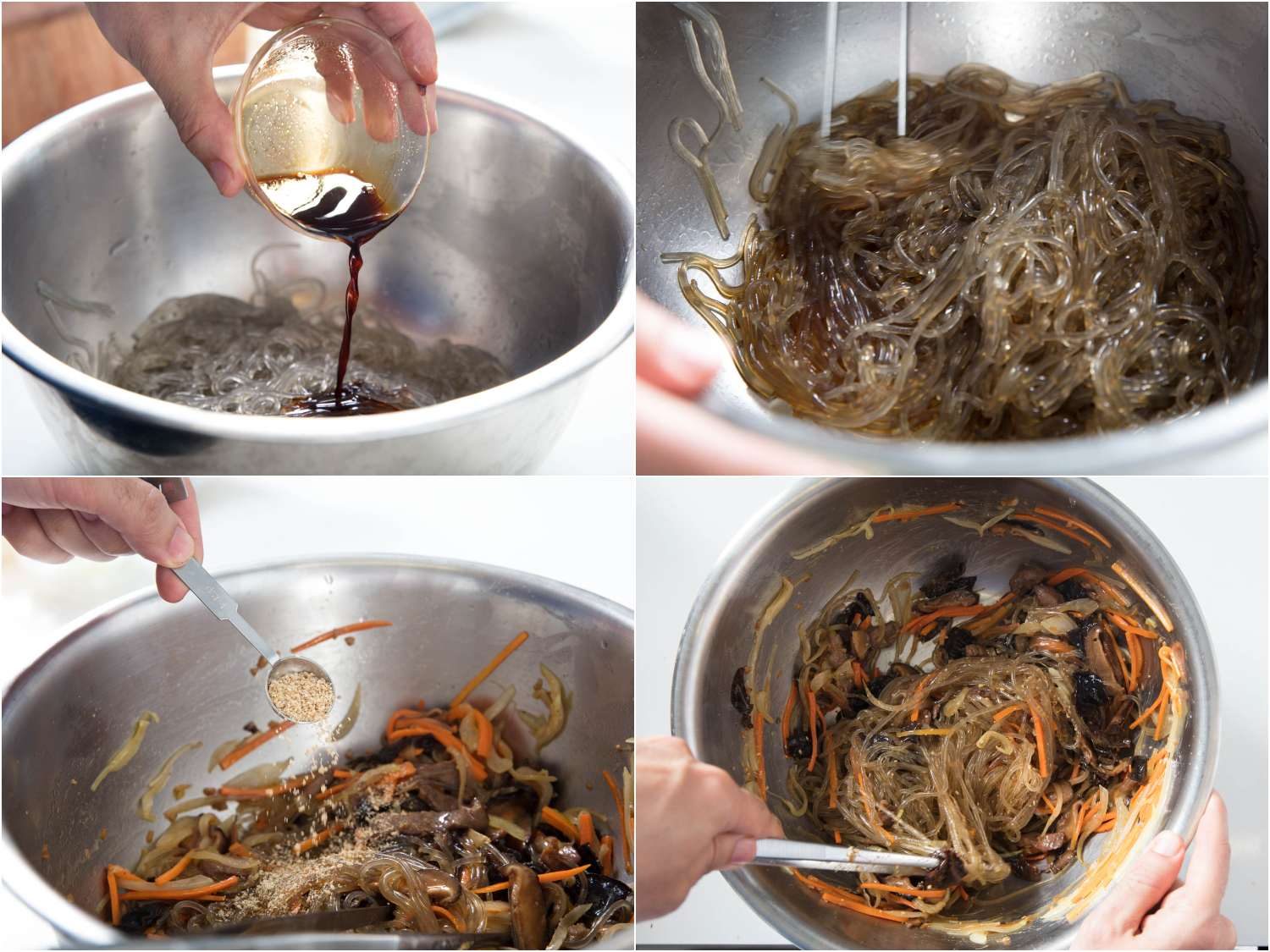
Once everything is prepared, it’s time to bring it all together. In a big mixing or serving bowl, combine the cooked noodles with a mixture of wheat-based soy sauce and either brown or white sugar until they’re well coated, then add the other ingredients and toss to combine. (I like to add the greens at the very last minute, so they don’t lose color by cooking in the heated noodle mix.) A note about seasoning: The ratio I’ve provided of soy sauce to sugar is my preference, but you can adjust to suit your palate.
Japchae is not a noodle dish that you typically eat in one big bowl all by itself (as you would, for example, with naengmyeon). Instead, it can be served warm as part of the Korean table, with other banchan (side dishes), soup, and rice. You’ll often see it in a large shared bowl or platter as the “main” dish on the table, with smaller banchan on the side, but it can also be served as one of the smaller banchan accompanying some other featured platters.
Whether it’s served large or small, the key to japchae lies in its abundant variety of ingredients and the diverse colors and flavors each brings to the plate.
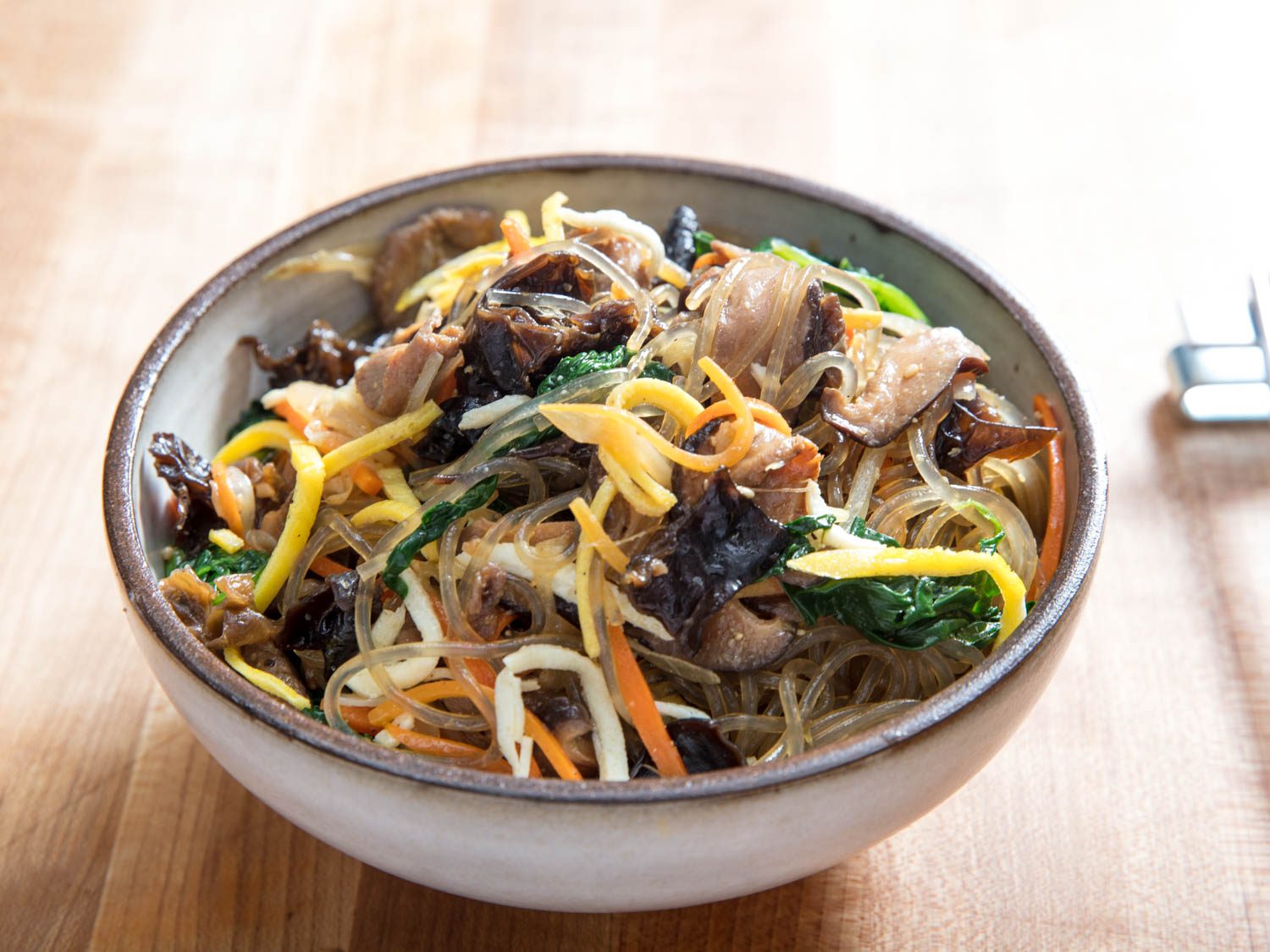
This post may contain links to Amazon or other partners; your purchases via these links can benefit Serious Eats. Read more about our affiliate linking policy.
Source link